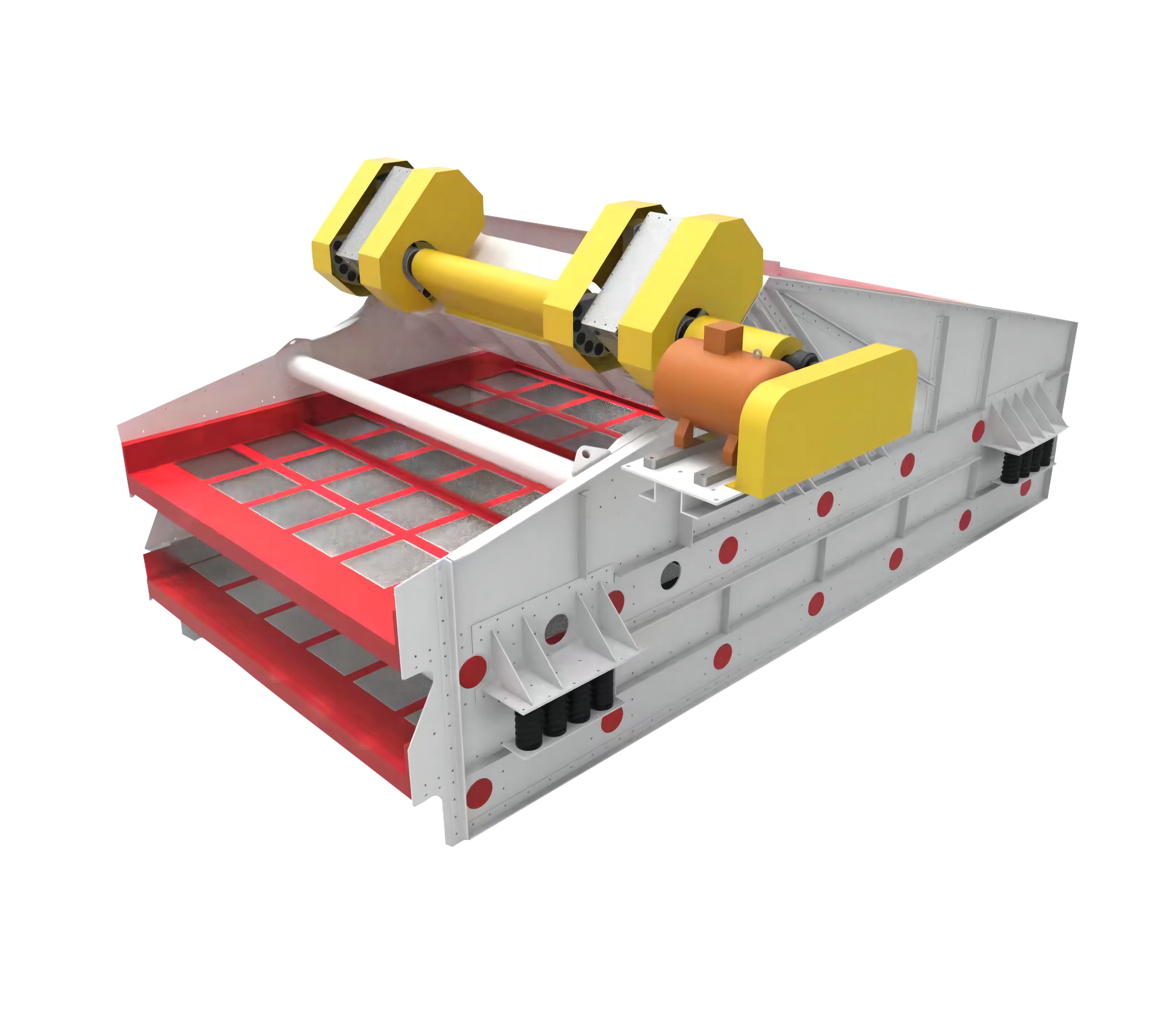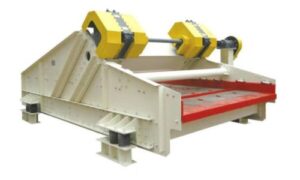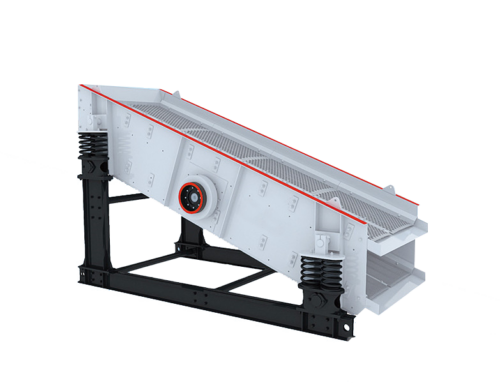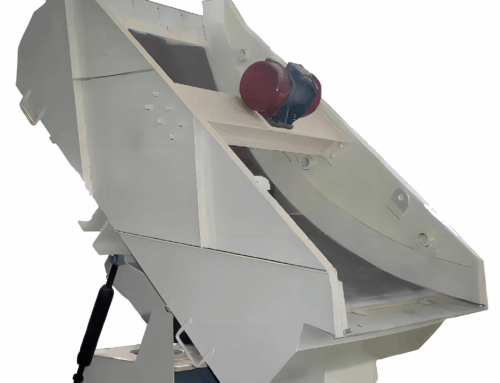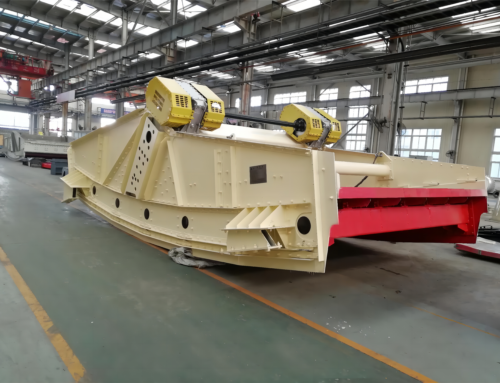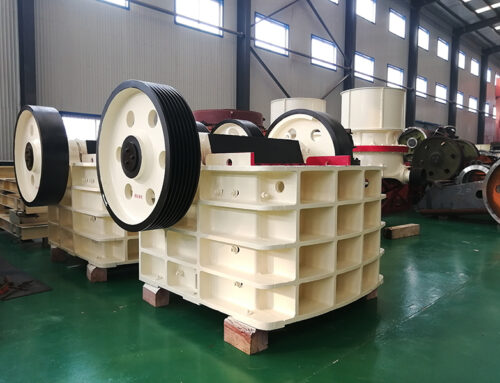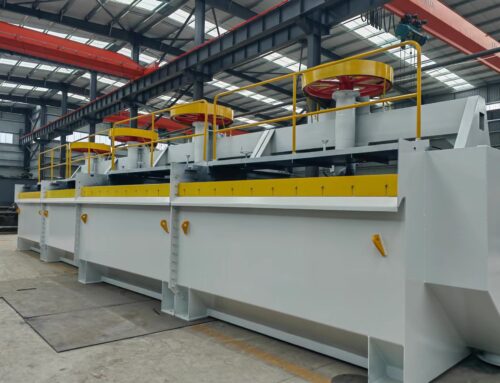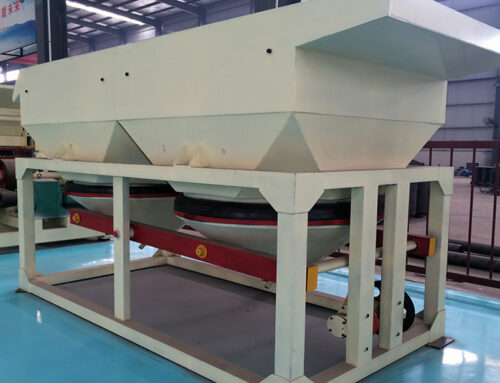Vibrating feeder is widely used in industrial production, used to feed materials evenly and continuously into the subsequent equipment. As the power source of vibrating feeder, the stability of its performance is directly related to the operation of the whole feeding system. In order to ensure the efficient and reliable operation of vibrating feeder, it is crucial to carry out scientific and reasonable maintenance of vibrating motor.
一.The working principle and structural characteristics of the vibration motor
1.Working Principle
Vibrating motor is installed a set of adjustable eccentric blocks at each end of the rotor shaft, using the centrifugal force generated by the high-speed rotation of the shaft and the eccentric blocks to get the excitation force. When the motor is energised, the centrifugal force generated by the eccentric blocks causes the motor to vibrate, which in turn drives the vibration of the trough of the feeder to achieve the conveying of materials. The size of the excitation force can be changed by adjusting the angle of the eccentric block, so as to meet the feeding requirements under different working conditions.
2.Structural characteristics
Vibrating motor mainly consists of motor body, eccentric block, bearing, protective cover and other parts. The motor body adopts special design with high mechanical strength and good heat dissipation performance to adapt to long time and high intensity vibration working environment. The eccentric block is usually made of high-quality steel, precision machining and dynamic balancing treatment, to ensure that a stable excitation force is generated when rotating at high speed. Bearings, as the key component supporting the rotor, are subject to large radial and axial loads, so special bearings with high load carrying capacity are generally used. The shield is used to protect the internal structure of the motor from the erosion of external dust and materials.
二.Vibration motor maintenance requirements
1.Daily Inspection
Check the appearance of the vibration motor every day to see if the motor shell is broken or deformed. If cracks or serious deformation of the shell are found, the protective performance and mechanical strength of the motor may be affected, and the motor should be shut down in time for maintenance or replacement.
Check whether there is any accumulation of dust and material adhesion on the surface of the motor. Excessive accumulation of dust and material build-up will affect the heat dissipation effect of the motor, resulting in increased motor temperature and reduced motor life. The surface of the motor can be cleaned regularly using compressed air or special cleaning tools.
In the motor running process, by listening to the sound to determine whether the motor is running normally. Normal operation of the vibration motor should emit a uniform, smooth humming sound. If there is abnormal noise, such as friction, impact or sharp whistling sound, it may be the internal parts of the motor loose, wear and tear or bearing damage and other problems, you need to stop the machine immediately to check.
Observe the vibration of the motor, whether the vibration is uniform and stable. If you find abnormal vibration of the motor, such as vibration amplitude is too large or too small, unstable vibration direction, etc., it may be caused by improper adjustment of the eccentric block, improper installation of the motor or uneven distribution of materials. The cause of the fault should be investigated in time and dealt with accordingly.
Use infrared thermometer to regularly measure the surface temperature of the vibration motor. Motor in normal operation, the temperature will gradually increase with the increase in operating time, but generally should not exceed its rated temperature. The rated temperature of different types and sizes of vibration motors varies, usually between 70℃ – 90℃. If the motor temperature is too high, it may be caused by motor overload, poor heat dissipation, short-circuit winding, etc. It is necessary to immediately stop the machine to check, find out the reasons for the high temperature and solve the problem, so as not to damage the motor.
2.Regular Maintenance
Bearing Maintenance
Regular lubrication of the bearings is critical to ensure proper operation of the vibration motor. In general, every 2000 – 3000 hours of operation, the bearings need to be supplemented with grease. The grease should be high temperature, high viscosity grease suitable for the vibration motor working environment, such as molybdenum disulfide grease. When replenishing the grease, it should be injected in the right amount to avoid too much or too little. Too much grease will cause the bearing to heat up, while too little will affect the lubrication effect of the bearing and accelerate the bearing wear.
Regularly check the clearance and wear of the bearings. Use professional bearing inspection tools, such as a per centimeter gauge, plug ruler, etc., to measure the radial and axial clearance of the bearings. If the clearance exceeds the specified range, it means that the bearings are seriously worn and need to be replaced in time. At the same time, check whether the raceways and ball surfaces of the bearings have defects such as scratches, pockmarks, spalling, etc. If there is any abnormality, the bearings should be replaced immediately.
Eccentric block inspection and adjustment
Regularly check whether the fastening bolts of the eccentric block are loose. As the vibration motor will produce strong vibration during operation, the fastening bolts of the eccentric block are easy to loosen. If the bolts are loose, it will lead to changes in the position of the eccentric block, which will affect the size and direction of the excitation force and make the vibrating feeder run unstably. Special spanners should be used to regularly tighten the fastening bolts of the eccentric block to ensure that the tightening torque meets the specified requirements.
According to the requirements of the production process, adjust the clamping angle of the eccentric block regularly. When adjusting the clamping angle of the eccentric block, stop the machine and cut off the power supply first, then use the special tool to adjust the position of the eccentric block slowly, and at the same time, observe the change of the excitation force until the required feeding effect is achieved. After the adjustment is completed, tighten the fastening bolts of the eccentric block again to prevent it from being displaced during operation.
Electrical system maintenance
Regularly check the junction box of the vibration motor to see whether the wiring is firm, loose, oxidation and other phenomena. Loose wiring will lead to increased contact resistance, making the motor run hot, and may even cause electrical failure. If loose wiring is found, the terminals should be re-tightened in time, and the dust and debris in the junction box should be cleaned.
Machine cleaning and maintenance
Regularly clean the vibrating motor and vibrating feeder comprehensively, remove the motor surface, shield, feeder slot body and other parts of the accumulated dust, materials and oil. When cleaning, soft cloth or brush should be used to avoid damaging the paint layer and parts on the motor surface.
Check the mounting base of the vibration motor to see if the base is loose or deformed. If the base is loose, it will affect the stability of the motor installation and aggravate the vibration and wear of the motor. The base bolts should be tightened in time, and the base should be repaired or replaced to ensure that the motor is firmly installed.
Check and maintain other parts of the vibrating feeder, such as springs and connecting bolts. Check whether the spring is broken, deformed, etc., and if there is any abnormality, it should be replaced in time. Tighten the connecting bolts to prevent them from loosening and falling off during vibration.
三.Common faults and treatment methods
1.Motor overheating
Failure causes
Motor overload: The material conveying volume is too large or the feeder trough is blocked, which leads to overloading of the motor and increase of current, thus making the motor overheat.
Poor heat dissipation: excessive dust accumulation on the surface of the motor, blockage of the ventilation and heat dissipation channels or damage to the fan, etc., affecting the heat dissipation effect of the motor, resulting in increased motor temperature.
Short-circuit winding: the insulation layer of the motor winding is damaged, resulting in a short-circuit winding and an increase in current, causing the motor to overheat.
Bearing damage: serious bearing wear or poor lubrication, resulting in increased bearing friction resistance, causing the motor to run hot.
Treatment
Check the material conveying situation, adjust the feeding quantity, clean the blockage of feeder trough and make sure the motor load is normal.
Clean the surface of the motor, clean the ventilation and heat dissipation channels, check whether the fan is running normally, and replace it in time if it is damaged.
Use insulation resistance tester to detect the insulation resistance of the motor winding, judge whether the winding is short-circuited. If the winding is short-circuited, the winding needs to be repaired or replaced.
Check the wear and lubrication status of the bearings, replace the damaged bearings in time, and replenish the appropriate amount of grease.
2.Abnormal motor vibration
Failure causes
Improper adjustment of the eccentric block: the clamping angle of the eccentric block is inconsistent or the position changes, resulting in unbalanced excitation force and abnormal vibration of the motor.
The motor is not firmly installed: the motor mounting base is loose, the bolts are not tightened or the vibration damping device is damaged, etc., which affects the stability of the motor installation and leads to abnormal motor vibration.
Uneven distribution of materials: uneven accumulation of materials in the trough of the feeder, so that the motor is subject to uneven force during operation, causing abnormal vibration.
Bearing damage: excessive bearing clearance or ball wear, resulting in unstable motor rotor operation, resulting in vibration abnormalities.
Treatment
Re-adjust the clamping angle of the eccentric block after stopping the machine to make it consistent, and tighten the fastening bolts of the eccentric block.
Check the motor mounting base, tighten the loose bolts, repair or replace the damaged vibration damping device to ensure that the motor is firmly installed.
Adjust the feeding method so that the material is evenly distributed in the feeder trough.
Replace the damaged bearings to ensure that the motor rotor runs smoothly.
3.Motor does not rotate
Fault causes
Power supply failure: the power supply is out of phase, the voltage is too low or the wiring is loose, etc., resulting in the motor not being able to start normally.
Damaged motor winding: motor winding is disconnected, short-circuited or grounded, so that the motor can not be powered to run.
Protective device action: motor overload, overheating and other protective devices action, cut off the power supply of the motor.
Mechanical failure: the motor rotor is stuck, the bearing is holding, or the transmission parts are damaged, etc., resulting in the motor can not rotate.
Handling method
Check the power supply line to ensure that the power supply is normal, repair the loose terminals, and exclude the problem of power phase shortage and low voltage.
Use a multimeter and other tools to detect the resistance value of the motor winding to determine whether the winding is damaged. If the winding is damaged, repair or replace the winding.
Check the protection device of the motor, find out the reason for the action of the protection device and deal with it accordingly, reset the protection device and restart the motor.
Check the mechanical parts of the motor, eliminate rotor jamming and other faults, repair or replace the damaged transmission parts.
Vibrating motor as the core power components of the vibrating feeder, its maintenance work to ensure the normal operation of the vibrating feeder, improve production efficiency, extend the service life of the equipment is of great significance. Through the strict implementation of daily inspection and regular maintenance requirements, timely detection and treatment of various problems in the motor operation process, can effectively prevent the occurrence of failures, to ensure that the vibration motor is always in a good state of operation.

